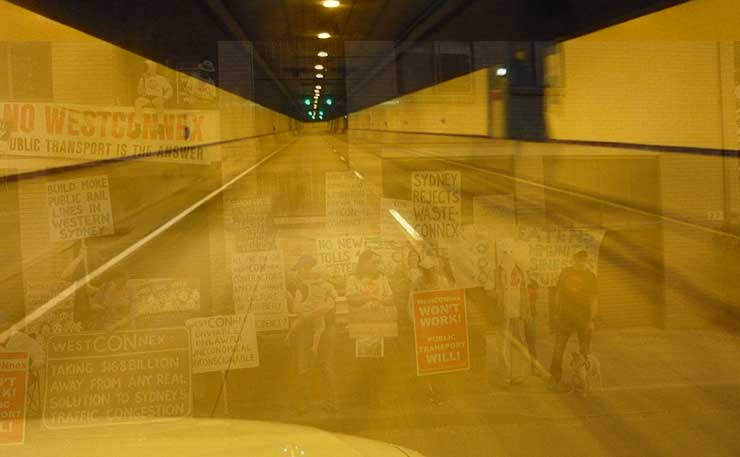New Matilda’s ongoing investigation into Leighton Contractors and AECOM – two key players in NSW’s controversial WestConnex project – reveals a history of email warnings of disastrous traffic projections and failed tollway solutions. New Matilda contributing editor Wendy Bacon reports.
Last week, Sydney Motorway Corporation began sweeping away scores of homes, trees and open space across the inner western suburbs of Haberfield, Concord, and Homebush to make way for construction sites for the M4 East stage of its controversial 33-kilometre system of WestConnex tollways.
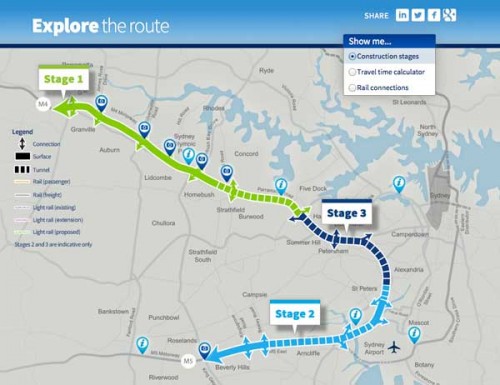 It intends to destroy more hectares of Sydney Park and St Peters in a couple of months, after already compulsorily acquiring hundreds of homes and businesses.
It intends to destroy more hectares of Sydney Park and St Peters in a couple of months, after already compulsorily acquiring hundreds of homes and businesses.
The NSW Baird government has handed responsibility for each stage of WestConnex to a consortium of companies. But two names stand out among the corporate crowd: Leighton Contractors (now officially called CIMIC but known as Leightons) and AECOM (previously Maunsell).
Leightons has been awarded the largest share in all three of the Baird Government’s WestConnex construction tenders, worth more than $8 billion. But not before the NSW Government made a mockery of the process created to ensure environmental checks and balances – the NSW Department of Planning assessed and approved an Environmental Impact Statement (EIS) after the contracts were awared.
The EIS, which included crucial traffic projections for Stages One and Two of the project, was produced by global engineering company AECOM.
The economic justification for the entire project – not to mention the traffic congestion, air quality and noise predictions – rests on the accuracy of AECOM’s predictions.
As New Matilda reported last year, AECOM was not only responsible for the EIS, but also has deep commercial interests in the development of the WestConnex project. By October last year, it had been awarded more than $33 million worth of engineering contracts including for the Stage Three tunnel linking the M4 East and New M5 tollways, for which there is as yet no EIS.
Since WestConnex was transferred to the publicly-owned private company the Sydney Motorway Corporation, its contracts have not been published.
Leightons and AECOM have connections in the tollway business going back to 2006. The story of AECOM’s association and the corporate disaster that followed their involvement in the North-South Bypass Tunnel (NSBT) in Brisbane, which became known as the Clem7 tollway, is infamous, and shines a spotlight on their current involvement in WestConnex.
Fairfax Media recently published evidence that Leighton Offshore, which is owned by a company based in the Cayman Islands tax haven, paid more than $20 million in bribes to Unaoil to assist the company secure Iraqi government contracts worth approximately $2 billion. Leightons has denied these claims.
Last weekend, The Australian reported information that a Rizzani-Leighton consortium had been delaying payments to contractors on its WestConnex M4 Widening project, possibly in an attempt to improve capital working figures, resulting in significant short-term improvements in cash generation and reported gearing positions.
Financial strains and hidden liabilities of its ultimate owner, Spanish construction company Grupo ACS, are other reasons posited for non-payment of over $1 million of outstanding contractor invoices.
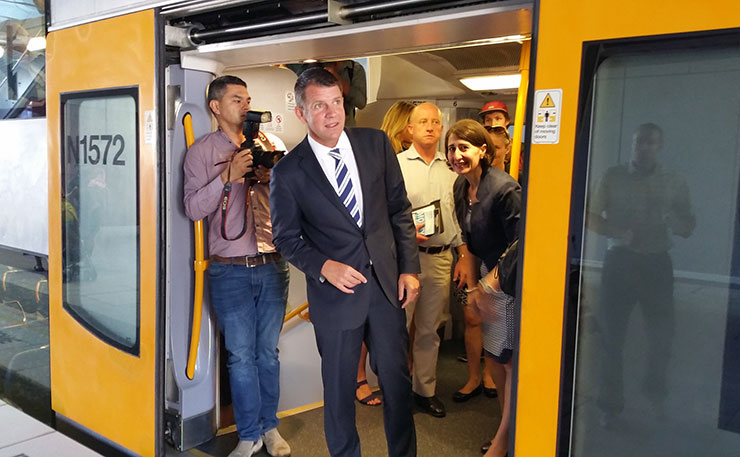
The Sydney Motorway Corporation responded by stating that they had a signed statutory declaration by Rizzani-Leighton stating that sub-contractor payments were up-to-date.
The evidence revealed in this story, plus evidence contained in these other media reports, raises questions about due diligence being exercised over the choice of WestConnex contractors, and the extent to which private interests have been allowed to influence Federal and State transport planning.
The evidence also supports concerns raised by independent experts who have criticised AECOM’s WestConnex traffic modelling.
Planning the Clem7
Back in 2005, the tollway business relied on wooing private investors rather than governments. Leightons and its partner investment bank, ABN Amro set up a special purpose company, Rivercity Motorway (RCM) to plan, build, own and operate the proposed Clem7 in Brisbane.
AECOM’s subsidiary, Maunsell, was paid $2.7 million to provide the traffic modelling needed to persuade investors that there would be enough toll revenue to deliver healthy profits.
In 2009, Maunsell changed its name to AECOM, the name we will use in this story. In accepting the forecasting contract, AECOM agreed to use its best professional judgement in its traffic projections.
The Clem7 traffic projections turned out to be wildly off the mark. AECOM had forecast that more than 60,000 vehicles a day could be using Clem7 within a month of opening, and 90,000 after six months.
Five months after opening, the tunnel was used by 27,000 vehicles a day, despite the toll for cars being cut to $2 from the projected charge of $4.28.
Unsurprisingly, The Clem7 went bankrupt in February 2011.
In May 2012, law firm Maurice Blackburn lodged a $150 million claim against AECOM in the Federal Court on behalf of about 700 RCM investors. Maurice Blackburn special counsel Richard Ryan told the ABC that the lawsuit centred on a gap between the traffic volume assessed by AECOM Australia, and the patronage actually achieved.
The lawsuit claimed patronage on the Clem7 was less than a quarter of the original forecasts provided by AECOM.
“Our clients claim that AECOM provided unreasonable assumptions that had the effect of making the tunnel project look viable when it was a dud,” he said.
Last year AECOM paid out $280 million to settle a parallel class action arising out of the Clem7 fiasco. At that time an AECOM spokesman said the firm had decided to “no longer provide traffic and revenue forecasting for toll road operators or owners in Australia… although it remained committed to expanding its Australian business, primarily engineering and design consultation for the mining and construction sectors”.
That’s small comfort to those negatively affected by the first two stages of WestConnex, for which the justification has relied heavily on AECOM’s environmental and traffic studies.
Meanwhile the Maurice Blackburn lawsuit, which has explosive ramifications for WestConnex, continues in the Federal Court. In this second case, AECOM has cross-claimed against Leighton Contractors, the ABN Amro bank, and other players in the Clem7 project. This strategy, which is designed to limit its liability by spreading the cost of a potential settlement over a number of parties, was unsuccessful in the first case.
New Matilda has been following the Maurice Blackburn case since last year. Earlier this year, a number of intriguing emails which form part of the evidence in the case were distributed to a courtroom crowded with nearly 30 lawyers, representing different parties in the class action suit.
The emails present a startling fresh insight into the relationship between the players in the Clem7 project, and how the investors came to be kept in the dark on traffic projections.
The Clem7 emails
The email communication began on November 25, 2005 when RCM was preparing presentations on Clem7 for the Brisbane City Council. Stuart Dalziel, an AECOM Transport planner, sent a message promising that the traffic models that were attached would be verified “at a later date”.
His message was copied to AECOM Principal Transport Planner, Alan Broadbent and sent to Leightons’ General Manager for Infrastructure Investment, Peter Hicks. At the time, Hicks was on the Board of River City Motorway.
Hicks had spent years working at NSW Transport before he moved to Leightons, where he worked for 20 years until his departure in December 2014, just around the time the NSW government announced that Leightons had been selected as the lead partner in the first of three WestConnex construction contracts.
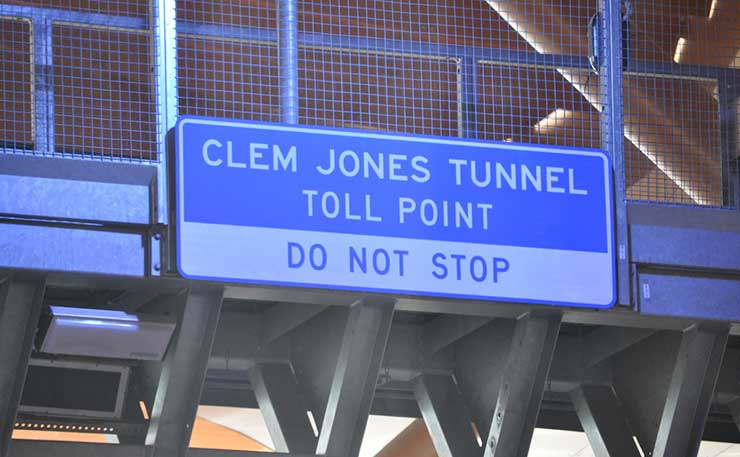
Hicks promptly responded that he only needed figures for the “base case” not the “low case” (the “low case” predicted lower traffic motorway volumes, although even these predictions later turned out to be far above actual figures).
His message to the AECOM traffic modellers was that their full traffic report would be appended to the Brisbane City Council report, and that “hopefully your ‘later date’ is today for verification!”
Clearly Hicks was wasting no time.
On the same day, Broadbent appeared worried when he confirmed to three other AECOM traffic modellers that Hicks’s email showed that he was pushing the ‘base case’ flows (i.e. the higher estimates) as “the [AECOM] forecasts”.
Later in the day, Broadbent sent another email in which he added, “However the danger is that we have no control over the final RFP (Request for Proposals) document, indeed we may not even see the final product and that Peter will include only base case traffic flows and these will become the [AECOM] best case forecasts.”
He said he believed that Hicks should be told that the ‘low’ represents the most realistic scenario and that ‘base case’ is founded on more aggressive assumptions – and that both should be provided.
In April 2006, the Brisbane City Council awarded the Clem7 tender to the RCM consortium. Six months later the email correspondence continued. By then, two of ABN Amro’s bankers were working on the finalising the Product Disclosure Statement (PDS) that would be used in its presentations for investors.
AECOM’s Alan Broadbent was worried. On May 5, he emailed Hicks and the ABN Amro team to tell them he had noticed that:
“there is a discrepancy between the copy of the presentation attached to the earlier emails (below) and the hard copy provided by [name of ABN Amro Banker]yesterday. The original contained a graph showing both low and base cases, whereas the hard copy depicted only the base case. It is important that we demonstrate in the presentation that [AECOM] have produced two set of forecasts. The PDS will say so, so we must disclose that at the presentation.”
One of the ABM Amro bankers responded the next morning, making it clear that he did not see the ‘low case’ as relevant to investors:
“Re Investor Presentation
Hi Alan
The equity investors return is generated relative to the base case – the low case is not relevant to them. If the base case is not achieved their return falls. All the sensitivities are calculated against the base case traffic. Whether the low case is described in the PDS or not, the presentation only must not be inconsistent with it. A description of the low case will only serve to confuse the investors without giving them any information about what traffic needs to be achieved for them to get them to get their return 12.25 IRR. This is all that concerns them.”
On May 9, AECOM Principal Traffic Modeller, Denis Johnston then in London, emailed AECOM Managing Director of Public Private Partnerships Ashley Yelds, in the United States to tell him:
“Ashley- the presentation copy has only the base case scenario shown _ Slide 33 – and it excludes ramp-up effect. Misleading and deceptive conduct? – Denis Johnston”
The following day, Broadbent forwarded the ABN Amro banker’s email to his AECOM colleagues and commented, “This is from the devious guy.”
A few days later, the presentation took place. Broadbent shared his notes and observations with Denis Johnston, and his AECOM colleagues:
“First of all my concerns (the final round of the ‘death by a thousand cuts’)
- Base case only was presented as the [AECOM] forecast – no reference for low (or Bank at all). No reference to base case as an aggressive equity forecast and Peter glossed glibly over the aggressive assumptions – e.g. population and employment capacity issues (All of which are fully documented in the traffic report but are not explicitly mentioned in the PDS).
- I’m concerned about the traffic forecasts going to market and that investors are being asked to rely on the ‘base’ case traffic numbers.
- Concerned that the base case number will go public.
- Peter [Hicks] became increasingly gung-ho during the course of the week and wouldn’t let me answer questions.
Broadbent then spelled out more detailed concerns about what potential investors were told about network assumptions. He attached a note that provides “our (AECOM’s story) on the various issues.” This material has not yet been tendered in evidence in the Maurice Blackburn court case.
Hicks has not given evidence in the court case and his interpretation of events may well differ from those of AECOM staff.
AECOM completed its final traffic report by early June and despite their concerns, the AECOM executives supplied a letter for the PDS that was lodged with the Australian and Securities Investments Commission in June 2006.
The letter did not include the more conservative ‘low case’ traffic estimates. This is one of the bases on which they are being sued under the Corporations Act for making “misleading or deceptive statement” and “omitting information” which would be “materially adverse” from the point of view of a “reasonable person” acquiring a financial product.
In August 2006 and relying on the PDS, the Hopkins Family Superannuation Fund bought 40,000 units. Along with hundreds of other investors, Hopkins is now suing AECOM.
New Directions For AECOM
It is clear from these emails that the Clem7 job was a negative experience from AECOM’s perspective. As an ambitious, expanding company, it was hunting for strategies that would enable it to prosper.
From a traffic modelling point of view, problems were created by the revenue predictions of the sponsor companies, who had a commercial stake in their bid being successful, after which risks could be transferred to ordinary investors, or ‘dumb equity’ as it is sometimes known.
On July 7, 2006 Denis Johnston, then based in London, emailed a team of people at AECOM, including senior manager Michael Batchelor with a “few retrospective observations on the NSBT” project.
He was troubled by the tollway model because the “sponsors are driving our T & R (Traffic and Revenue) people to the very edge on every possible factor that contributes to the revenue forecast – knowing that they can later cast the forecast as “done by the experts” and pass the risk onto dumb equity at the end.”
Johnston had seen the assumptions behind AECOM forecasts “pushed to the most favourable position for the revenue – still in the plausible range”.
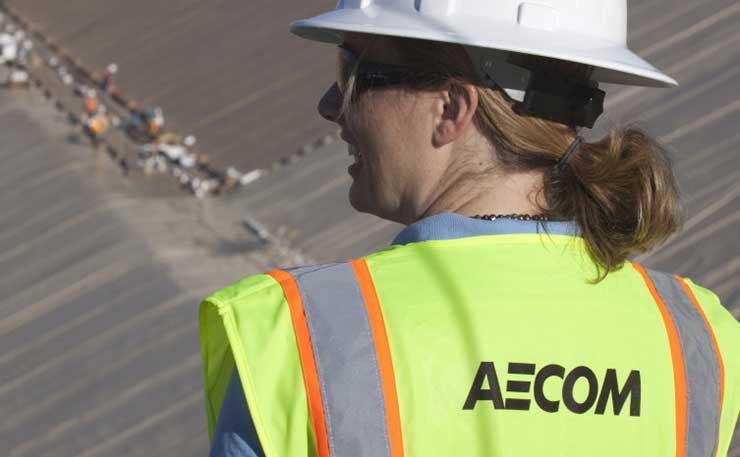
Johnston’s views expressed in this email were never disclosed to investors and form an important part of the case against AECOM.
He went on, “I am not saying that we can’t resist the pressure and insist on more conservative assumptions, but the Sponsor is not driven by a proper assessment of risk – and is therefore not really interested in the longer term consequences – because he is really only taking bid stage risk (i.e. the risk of losing his bid costs).
Leightons, Johnston explained, were convinced of the risk transfer model… “and the ABN-AMRO connection has worked well for them. There is no question that the T & R service has high value and was perceived that way by the sponsors because it is a major part of the NSBT bid cost. Staying with Leighton team will mean more of the same – so far not all that bad for business!!”
Johnston was looking both to create more value out of the current model and also to “create value by changing that model”. His aim was to create “better global bidding strategies”.
Options included charging higher fees at the bid stage (which would allow a peer review process) – “although we are at the top of the league table in Australia, there are competitors globally.”
One reason he gave for changing the model is that “State and Federal governments must be sick of ‘Wal King wins no matter what’ outcomes” (Wal King was the Managing Director of Leighton Contractors until 2010, after which he was reported to be staying on as a consultant. His remuneration in 2009 was $12.6 million).
Options considered by Johnston included getting into a “lead advisor position with a no-contractor team” which would mean “we can charge out more value for ourselves because the other team members are basically bankers and lawyers”.
AECOM lawyer Malcolm Haack responded that Batchelor’s ideas “should be investigated. The benefits could be significant – greater revenue for the services performed and becoming a more professional player in the market”. He advised seeking a merchant banker’s advice.
Batchelor also responded positively that it was “right to approach future projects on a more commercial basis.”
AECOM was on the lookout for more BOOT (a form of project financing in which a private company receives a concession from the private or public sector to finance, design, construct, and operate a facility). Batchelor observed that the “process of negotiating the NSBT contract changes and the PDS (Product Disclosure Statement) was not satisfactory” but wondered if Leightons would continue to use AECOM now it was “prepared to flex its muscle”.
He suggested a hold on BOOT negotiations while advice was sought: “This might be to redefine the negotiations with Leightons at a corporate level (Hicks?) for a package of products.”
Construction of the Clem7 was underway by 2006. Meanwhile, over in the US, AECOM became involved in four BOOT tollroads connected to Australian company Macquarie Bank, which is also involved in WestConnex. These projects also ended up in court.
Finance company Syncora agreed in December 2006 to provide Macquarie with insurance on the basis of what it later claimed in the New York Supreme Court were “fraudulent misrepresentations of the objectivity of [AECOM’s] traffic and revenue forecasts”.
In a judgment published on July 1, 2013, New York Supreme Court Judge Melvin Schweitzer found that there was evidence an undisclosed scheme of “success fees” from Macquarie to AECOM incentivised it to boost up traffic forecasts.
According to Judge Schweitzer’s judgment, “These under-the-table success fees amounted to additional millions of dollars per transaction, and were paid in connection with the American Roads transaction as well as many others. None of this was disclosed to Syncora which was instead led to believe that [AECOM] was an objective adviser on whom it could, and did, rely.”
Schweitzer refused a motion by Macquarie to dismiss the case, finding that there was a case that “the undisclosed conflict of interest under which [AECOM] operated, in addition to secret success fees that [AECOM] was paid… do amount to a material misrepresentation or omission of fact.”
Macquarie acknowledged they that they paid “success fees” to AECOM but said that they did not disclose them because Syncora never asked about the basis of AECOM’s compensation arrangements, so Macquarie could not be accused of any misrepresentation on this score.
In August 2013, this litigation was settled when Syncora took over the Macquarie interests, and agreed to drop the litigation.
Clem7 opens and collapses
The Clem7 opened in March 2010 but by February 2011, RCM was bankrupt. The tunnel cost $2.2 billion to build, but was sold for only $618 million in 2013.
The privately funded tollway construction model was facing disaster. Three of four Australian tollways – Clem7, Lane Cove Tunnel and Cross City Link – had financially collapsed after being assessed by AECOM traffic modellers. Arup, the forecaster for the BrisConnections tollway had also been sued in a case that was settled last year.
Independent experts, including University of Sydney researcher John Goldberg, had been warning for years that traffic forecasters “worked out what the investor was going to be happy with in terms of rates of return, and they worked back to a set of numbers which would produce that return for investors. Such forecasts do not properly relate to the interaction of land use and transport, and it is not surprising that they are not fulfilled.”
But the closely knit tollway industry – in which companies Macquarie, ABN Amro, Transurban and Leightons (with its subsidiaries Thiess and John Holland) were familiar names – was not deterred, and focussed instead on a new funding model in which most risk would be transferred to the public, rather than individual investors.

As CEO of Leightons, Wal King warned governments would have to “stump up more”.
After the election of a NSW LNP government broke the long period of Labor rule in March 2011, the roads lobby successfully sold a new model to its ex-banker Treasurer and now Premier, Mike Baird.
In 2011 a new body, Infrastructure NSW (INSW) was established which was heavily weighted with private infrastructure interests, including ex LNP Premier Nick Greiner. By August 2012, WestConnex became its top priority.
By October, WestConnex was announced by the NSW government as a key recommendation of INSW, despite criticism that the government was committing to a project of huge scale without a detailed business case or modelling to back up its decision.
In mid-December 2012, Macquarie Capital was granted the financial scoping contract for WestConnex until 2070. On January 16 2013, the NSW Acting Premier Andrew Stoner selected several companies to be closely involved in helping design and justify the WestConnex project.
Leightons, and its subsidiary Theiss Constructions were paid $4 million to be “industry partners.” AECOM was selected as the traffic modeller.
All of these companies had been deeply involved in failed tollway projects.
Two days later, the then Federal Minister for Infrastructure and Transport Anthony Albanese set aside $25 million “to advance planning for WestConnex”. The funding had been foreshadowed in the 2012 Federal budget and was used to set up the Sydney Motorways Project Office.
The companies chosen to plan the project had a huge stake in it going ahead. Needless to say, they found it was a great idea. They were now ideally positioned for further involvement.
Leightons, politcs and corruption
Meanwhile, evidence had been trickling out about Leightons’ corrupt activities outside Australia since 2011, when the company issued a media release stating that it had referred to the Australian Federal Police a ”possible breach” of its code of ethics related to payments made by its subsidiary Leighton Offshore.
While the public would hardly be aware of such a release, you could expect governments to be following such developments. From 2012, Fairfax Media investigations resulted in an avalanche of media reports about corruption at Leightons.
In 2013, the first WestConnex Business Case was developed by Roads and Maritime Services staff and advisers from private consulting, finance and construction firms, including Ernst & Young, Macquarie Bank, AECOM, Leighton Contractors and Ferrovial Agroman. This business case was later severely criticised by the NSW Auditor General.
Leightons had long built its influence over federal and state governments by using a combination of paid lobbyists and big donations to Labor, Liberal and National parties, including for private meetings with politicians.
A Democracy for Sale search shows that since 2005, Leightons and its subsidiaries Thiess and John Holland have made political donations worth more than $1.6 million, including $918,243 to federal and state Labor branches and nearly $800,000 to Liberal and National Party federal and state branches.
Last year, Fairfax reported that an internal audit had revealed that Thiess had given then Premier Barry O’Farrell a pen worth more than $1,000. He could not remember the gift.
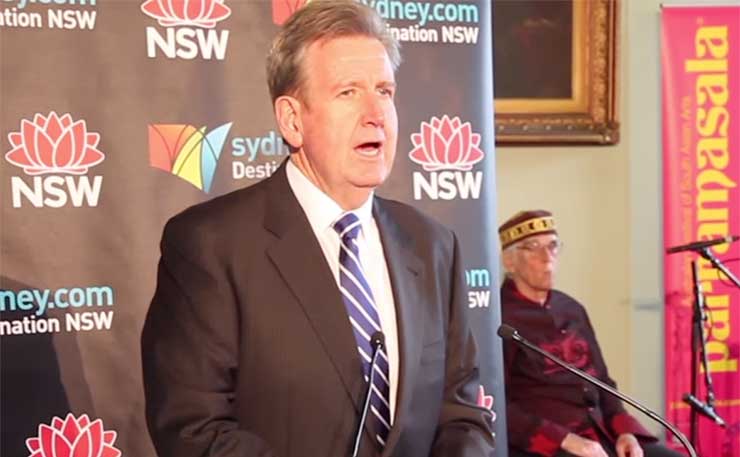
Former federal Infrastructure Minister Anthony Albanese’s decision to fund the planning office was criticised by Greens Senator Lee Rhiannon in a Senate speech in February 2013, in which she raised the question of tollway company political donations.
“The ears of politicians have been successfully bent by the likes of the motorway construction companies… companies like John Holland, Leighton, Thiess and Macquarie Bank have given big donations to the major parties. The public do not know if deals are done behind closed doors, but there is the perception that MPs are favouring private road building businesses at the expense of public transport.”
Pushed by then Opposition leader and tollroad fan Tony Abbott, Labor earmarked $1.8 billion for WestConnex in its 2013 budget but made federal funding conditional on adding no tolls to pre-existing roads and a preferred route going straight into Sydney’s CBD.
After the Abbott government was elected, it went ahead with the $1.5 billion grant. New Matilda confirmed that by late April 2016, only $750 million of that grant had been paid.
Recently, Senator Rhiannon has called for Liberal, National and Labor parties to pay over to charity the amounts donated by Leightons during the period covered by evidence of corrupt offshore activities.
Albanese has been critical of the planning process that led to the WestConnex approvals that are now having such a disastrous impact on his electorate of Grayndler. Labor has also supported the Greens’ call for an inquiry and Federal audit of WestConnex, but has not joined the Greens and community groups in their call for a halt to further funds being handed over to WestConnex until an independent inquiry is held.
The ALP still supports its own preferred version of the project, which would see different routes for the M4 East and New M5 and no M4/M5 connecting tunnel. All experts say this would lead to unparalleled traffic congestion throughout the inner west.
Where are Clem7 players in 2016?
Ten years on, after more takeovers and mergers AECOM is an even bigger global company. It has successfully pursued a strategy of becoming more directly involved in the engineering and construction of major projects. Only 9 per cent of AECOM’s business is in the Pacific region, but that business depends heavily on government contracts.
Despite their divergent interests in the Clem7 Rivercity Motorway legal action, AECOM continued to be involved in joint business ventures with Leighton Contractors, including an unsuccessful bid for the Melbourne East West Link, a project which was cancelled after a massive community campaign forced the Victorian ALP to withdraw its support for the project.
Thousands of public submissions objected to the apparent conflict of interest between AECOM’s on-going commercial interests in engineering WestConnex contracts and its preparation of EIS documents, which, by definition, have to be impartial.
As New Matilda reported last year, long before AECOM completed the EIS for the M4 East, it endorsed WestConnex on its website claiming: “WestConnex will assist in making Sydney a more liveable city by reconnecting communities, enhancing centres and significantly improving the urban domain along Parramatta Road” and that it will “provide welcome relief from congestion on the M4 and Parramatta Road…”
That material, and all other mention of WestConnex, has since disappeared from AECOM’s website.
Stuart Dalziel, who sent the original Clem7 email about the lack of information going to Brisbane City Council, stayed at AECOM and rose through the ranks. By the time AECOM got involved in WestConnex, he was a director of the Transport Advisory section of the company. He was Transport Manager on the WestConnex M4 East Environmental Impact Statement (EIS) project. He has posted an endorsement of his WestConnex EIS work by the RMS on his Linked In profile.
New Matilda attempted to interview and put questions to Dalziel but at the time of publication had not received a response.
AECOM’s EIS for the M4 East was signed off by Jay Stricker who is now an AECOM Transportation Director after a long career at the NSW Roads and Traffic Authority, now called Roads and Maritime Services.
RMS is the government client for the WestConnex project. During her time at the RTA, Stricker was quoted in the media defending the old M5, which even the NSW government claims was poorly designed.
When the NSW government announced that AECOM was the traffic modeller for WestConnex, it rang bells for Greens MLC Mehreen Faruqi, who is also an engineer.

The Australian Financial Review reported her concerns about AECOM’s role in Clem7. The government responded that AECOM’s work would be subject to independent review. In fact, these reviews, along with the WestConnex traffic model, have never been released publicly, a matter that has been often criticised by independent traffic experts.
Although billions of dollars of public money is being poured into the project, WestConnex claims it is “commercially in confidence”.
New Matilda can reveal that one of those independent traffic “peer reviewers” is none other than AECOM’s Clem7 traffic modeller, Denis Johnston. He remained at AECOM until 2008 when he set up as an independent consultant. In early 2013, he was invited to advise and be an “independent’ peer reviewer of the WestConnex Traffic Model.
He received two contracts amounting to $130,000 to review the traffic model in 2013 alone. When New Matilda rang him recently, he said, “I can’t speak to you. I am engaged in a role with the government to advise on this matter so I will have to terminate this call.”
It is not possible to report how much he has subsequently been paid because the rest of his contracts are not publicly available.
In 2011 Denis Johnston made a submission to the Department of Infrastructure in which he defended the profession of traffic forecasting in Australia, which he described as “a very small number of people in a small number of companies”. He acknowledged that lawsuits resulting from false predictions would be a “drag on [a company’s]share price and create a risk to its ability to borrow or obtain insurance” but argued it would be “naive in the extreme” to penalise forecasters as this would result in “all forecasting companies exiting the field”.
He advocated more government support for forecasters and independent review, although he did not say whether this should be made public.
Johnston also acknowledged that “downside” risks had not been made “clear enough to ‘Mum and Dad’ investors – and even to small institutional investors. They generally don’t have access to the full traffic report – just a summary included as a ‘Product Disclosure Document’ in the prospectus – where there is limited scope to review all possible forecast risks and outcomes.”
He argued, however, that the failed projects had been taken over by other private companies and added to overall public infrastructure. He assumed, “toll road projects were presumably identified by State Governments as being in the public interest prior to a decision to proceed to being delivered”. He did not discuss the active role that the tollway lobby plays in pushing government transport planning towards ever more road projects, and the future tolls that the public would be paying to tollway owners, especially Transurban. Transurban has ended up owning nearly all Australian tollroads, including some failed ones that it bought very cheaply.
Michael Batchelor rose through the ranks of AECOM, and became Australia and NZ CEO in 2012. After AECOM was already involved in WestConnex, he left the company in May 2014 to establish a new firm, Nimbus Consulting Pty Ltd, which was paid $445,000 between January and July 2015 to provide an “interface between industry and the government”.
His LinkedIn profile states that he was “responsible for establishing the RMS interface team and overseeing organisation changes through new project governance; negotiation of project deeds, land acquisition, project approvals, tolling services, existing asset transfer, engineering standards, deed administration, network integration and RMS program and budgets.” All of which must mean he was closely involved in the relations between AECOM, Leightons the contractor, RMS and the Sydney Motorway Corporation.
When contacted by New Matilda last year, Batchelor sent a message to say that as a “humble consultant to RMS”, he was not authorised to speak on behalf of WDA and suggested we contact WestConnex.
Peter Hicks will be involved as a witness in the Clem7 court case. He left Leighton in December 2014, just as it succeeded in winning its first three big WestConnex contracts for the M4 Widening. By then Leighton Contractors (now known as CIMIC) had been taken over by the Spanish giant ACS Grupo. Hicks is now CEO of CP2 which manages “infrastructure investments made on behalf of global institutional clients ensuring that any opportunities for extra value are managed”.
There is no inference from New Matilda that Batchelor, Dalziel, Johnston or Hicks are in any way involved in any corrupt conduct.
Companies Clean-Up As Public Takes Risk On WestConnex
The Clem 7 and other disasters have not stopped Leighton and AECOM continuing to make money out of toll roads. But now there is little risk for them as contracts are paid as projects are delivered.
Financial predictions for WestConnex are already turning out to be wrong – the project cost has blown out from $10 billion to $17 billion, with more limbs being added each time a new WestConnex stage is announced.
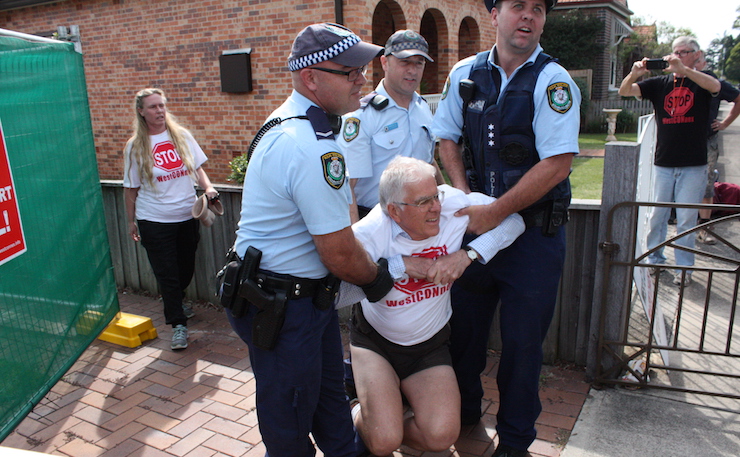
This means that users of the toll road will be paying ever-increasing tolls for decades to come. SGS Consultants (who were hired by the City of Sydney) and other independent experts have already found that WestConnex’s Updated Business Case and AECOM’s M4 East EIS are deeply flawed.
Last Sunday, saw more community action against WestConnex. Two WestConnex Action Group members, Bill Holliday and John Hyde occupied an apartment building that will soon be destroyed by Leightons’ bulldozers.
After they had been arrested and charged with trespass, they “called for a halt to WestConnex and a public inquiry into the planning, contracting, and secrecy behind the massive tollway project”.
With $17 billion of public money, the future mobility and transport costs of Sydneysiders, the destruction of communities and the environment including endangered species at stake, it is time for the Federal and NSW governments and both major parties to listen.
* Wendy Bacon is a member of the WestConnex Action Group.
Donate To New Matilda
New Matilda is a small, independent media outlet. We survive through reader contributions, and never losing a lawsuit. If you got something from this article, giving something back helps us to continue speaking truth to power. Every little bit counts.

